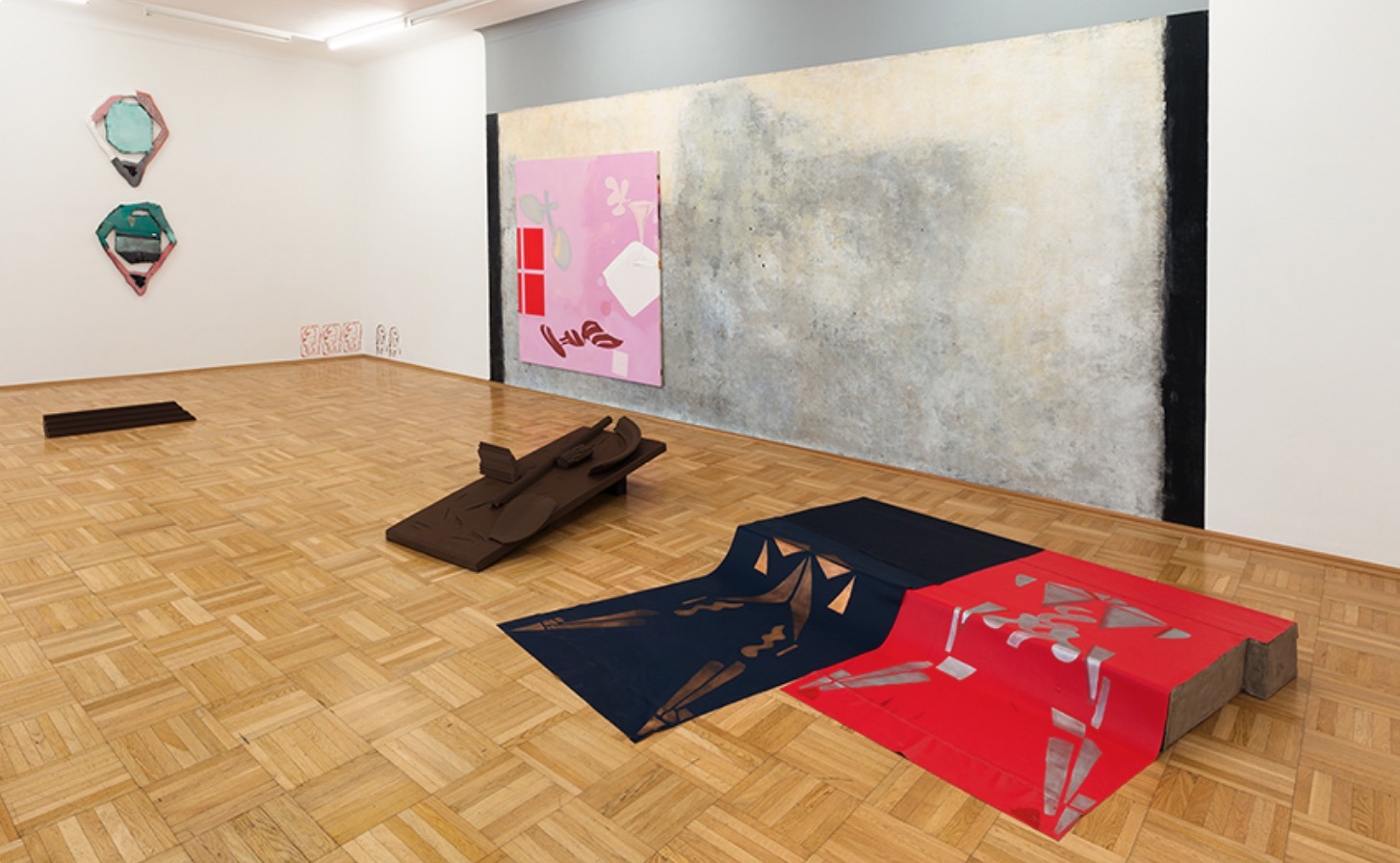Luisa Kasalicky
Tiefschlaf in der Stadt
05 Feb - 21 Mar 2020
LUISA KASALICKY
Tiefschlaf in der Stadt
5 February – 21 March 2020
In her current solo exhibition Luisa Kasalicky showcases a new selection of paintings and sculptures that uses analytical imagery to establish a subtle syntax comprised of symbolic references and pointed differentiations. In recent years the artist has been working with the medium of drawing, gouache and tempera, alongside her installation-like and space-defining assemblages; but more recently, the theme of figuration has for the first time become an explicit focal point of her paintings. This is Kasalicky’s second solo exhibition in the main space of the Galerie nächst St. Stephan Rosemarie Schwarzwälder, following her Invitrospektive exhibition in 2014.
The installation-based situation which the visitor encounters on entering the Gallery’s first room can also be understood as the elaboration of a syntax within an exhibition context. Here Kasalicky’s studio wall replicated on a scale of 1:1 by a decorative painter serves as a polychromatic backdrop with autonomous work qualities, its setting providing the Viennese artist with an environment in which to arrange and correlate her various works. Hanging here, for instance, are the large-format canvases from the sensitive series of works entitled Synonym for Group... that open up a visual grammar echoed elsewhere in fully sculptural form with the montage sculpture Exlibris – für Alle! The anthropomorphic-mechanical impressions of a female and a male body on imitation leather (Imago) – an explicit reference by Kasalicky to a work by Austrian artist Otto Eder – resonate thematically with the sgraffito frieze on the true-to-scale studio wall where profile views of man and woman diverge in opposite directions as tension-charged vectors. Alongside photographic works, these works are complemented in the next exhibition rooms by silhouetted cut-outs that evoke the non-conformist attitudes of punk, through the use of metal inlays and a leather look. Similarly, the ‘icon’ from an earlier sculpture by the artist has been isolated and developed as an autonomous body into oversized gems positioned on the gallery floor.
Thus, media-based links are created with a narrative arrangement which, in its modular constellation, generates an aesthetic value-added that is far more than the mere sum of its parts. Since the late 2000s Kasalicky has been deploying invented forms in various media to playfully re-invent them in modified configurations and transfer them to new contexts as a visual grammar. In keeping with this principle, the current exhibition creates a theatrical reference system that extends beyond the ambit of each individual work and invites the visitor to cast a comparative gaze. The interaction between the works and her ‘icons’ broadens the horizon of interpretation and underscores the process-based qualities of Kasalicky’s complex imagery.
Daniel Brezina
Tiefschlaf in der Stadt
5 February – 21 March 2020
In her current solo exhibition Luisa Kasalicky showcases a new selection of paintings and sculptures that uses analytical imagery to establish a subtle syntax comprised of symbolic references and pointed differentiations. In recent years the artist has been working with the medium of drawing, gouache and tempera, alongside her installation-like and space-defining assemblages; but more recently, the theme of figuration has for the first time become an explicit focal point of her paintings. This is Kasalicky’s second solo exhibition in the main space of the Galerie nächst St. Stephan Rosemarie Schwarzwälder, following her Invitrospektive exhibition in 2014.
The installation-based situation which the visitor encounters on entering the Gallery’s first room can also be understood as the elaboration of a syntax within an exhibition context. Here Kasalicky’s studio wall replicated on a scale of 1:1 by a decorative painter serves as a polychromatic backdrop with autonomous work qualities, its setting providing the Viennese artist with an environment in which to arrange and correlate her various works. Hanging here, for instance, are the large-format canvases from the sensitive series of works entitled Synonym for Group... that open up a visual grammar echoed elsewhere in fully sculptural form with the montage sculpture Exlibris – für Alle! The anthropomorphic-mechanical impressions of a female and a male body on imitation leather (Imago) – an explicit reference by Kasalicky to a work by Austrian artist Otto Eder – resonate thematically with the sgraffito frieze on the true-to-scale studio wall where profile views of man and woman diverge in opposite directions as tension-charged vectors. Alongside photographic works, these works are complemented in the next exhibition rooms by silhouetted cut-outs that evoke the non-conformist attitudes of punk, through the use of metal inlays and a leather look. Similarly, the ‘icon’ from an earlier sculpture by the artist has been isolated and developed as an autonomous body into oversized gems positioned on the gallery floor.
Thus, media-based links are created with a narrative arrangement which, in its modular constellation, generates an aesthetic value-added that is far more than the mere sum of its parts. Since the late 2000s Kasalicky has been deploying invented forms in various media to playfully re-invent them in modified configurations and transfer them to new contexts as a visual grammar. In keeping with this principle, the current exhibition creates a theatrical reference system that extends beyond the ambit of each individual work and invites the visitor to cast a comparative gaze. The interaction between the works and her ‘icons’ broadens the horizon of interpretation and underscores the process-based qualities of Kasalicky’s complex imagery.
Daniel Brezina

